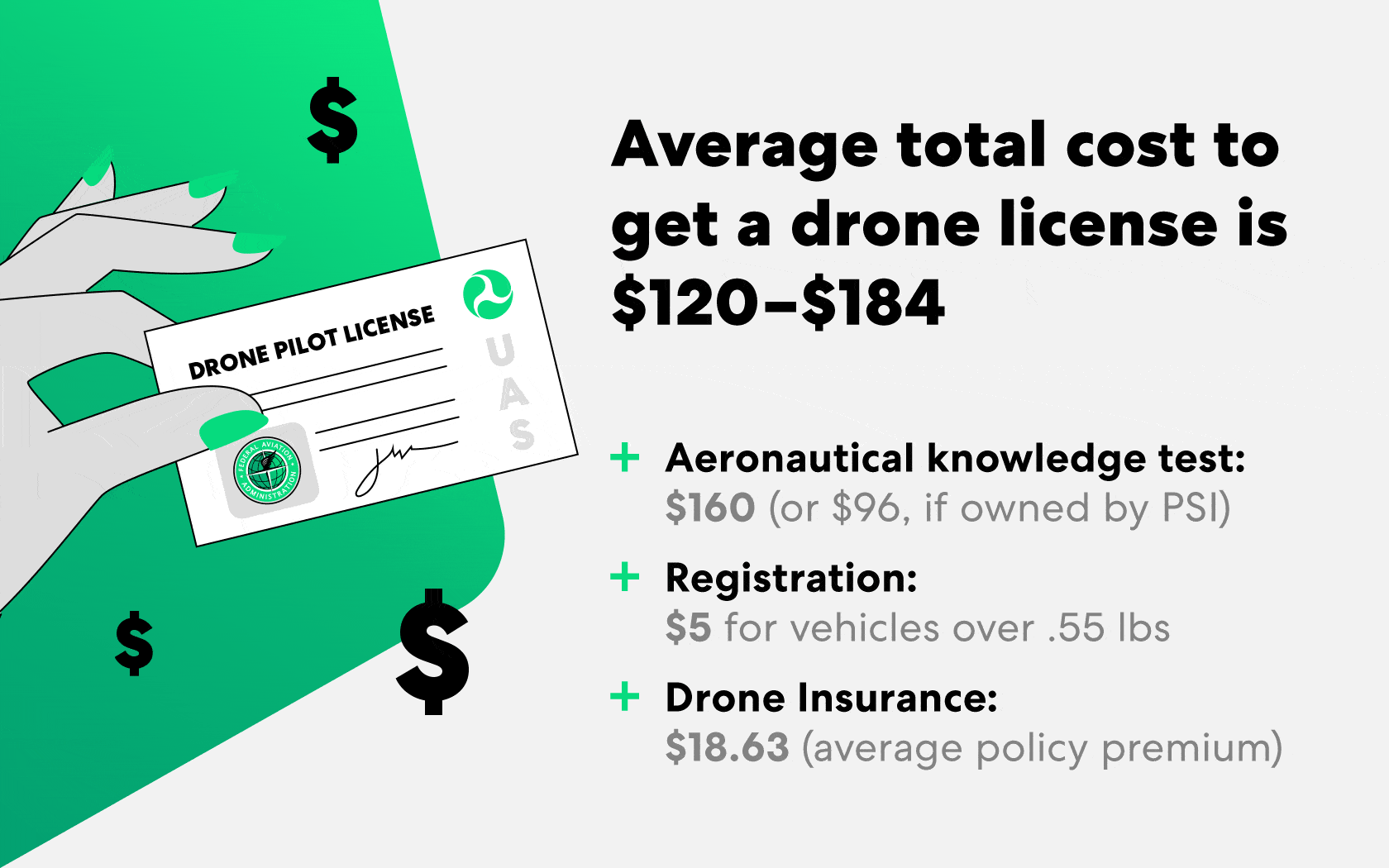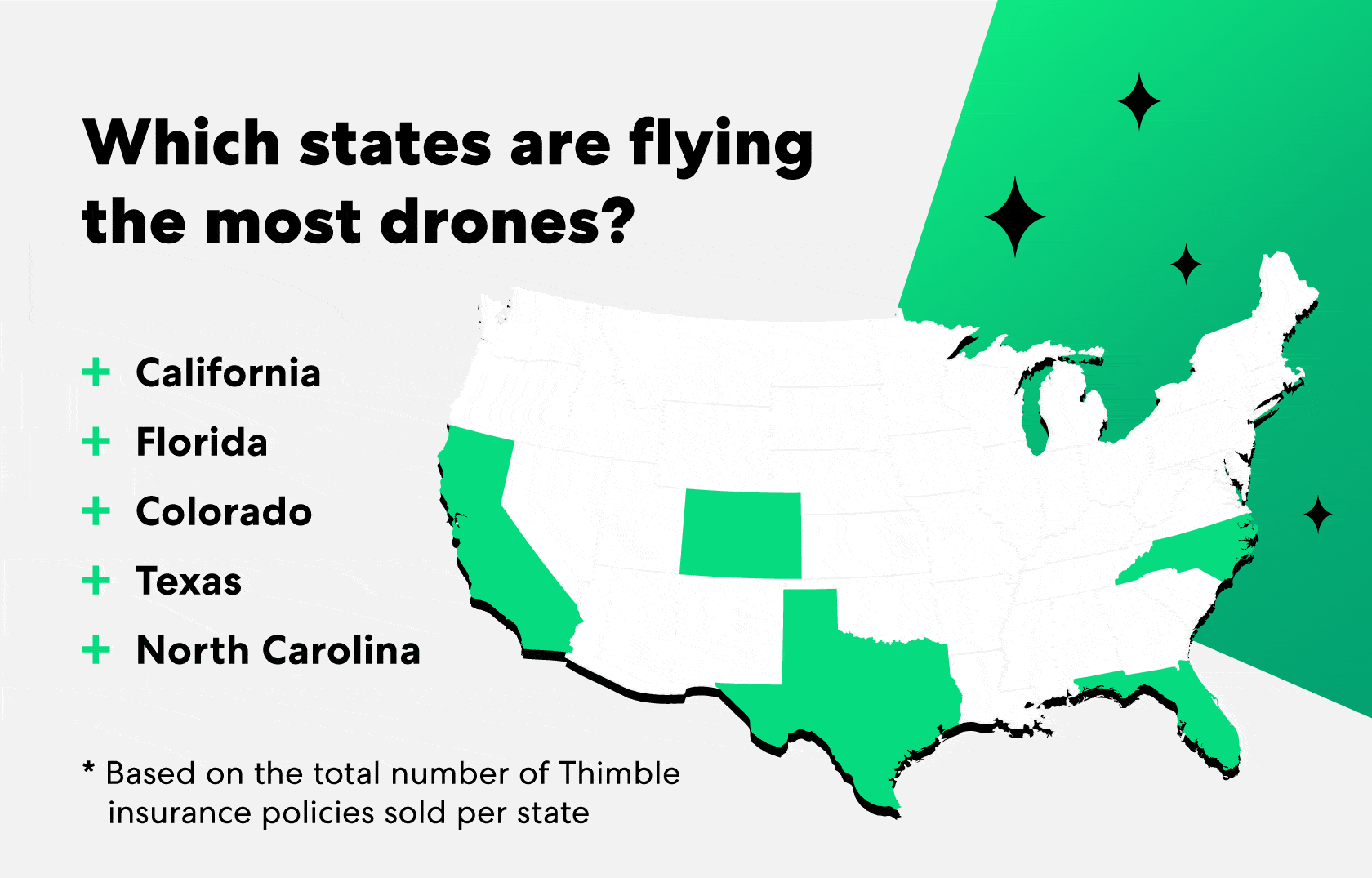In recent years, there has been a surge in popularity for drone photography — and for obvious reasons. Unmanned aerial vehicles, also called drones, allow photographers to shoot perspectives that used to only be obtained by taking a plane or helicopter. Now, the sky is no longer the limit for photographers, as aerial views are not only attainable, but the preferred shot for many industries seeking photography. In fact, Thimble sold over 22K drone insurance policies in 2020.
What’s more, full-time freelance drone pilots are making six figures.¹ Some even report making up to $3,500 a day to take these desirable shots for big companies. If you’re like many photographers, you probably can’t wait to take your skills to literally the next level … the sky. But, not so fast. In order to fly your drone, you may need to obtain a drone license from the FAA.²
In this guide we’ll go over everything you need to know before shooting from the skies; like how to get a drone license, why you’ll need drone insurance and FAA regulations for flying.
Do I need a license for drone photography?

Several industries now rely on drone photography for inspections, to improve safety, and enhance efficiency when collecting visual data. For instance, after a big storm or natural disaster, insurance companies can now process claims more quickly by gathering visual damage done to a building from the sky, instead of having to be at the site where the wreckage took place.
However, in order for you to fly a drone for commercial purposes (aka to make money) in the United States, you must first obtain a Remote Pilot Certificate from the Federal Aviation Administration (FAA).
Why? In 2016, the FAA finalized the first operational rules for routine commercial use of drones called the Small Unmanned Aircraft Systems (UAS) Rule, or Part 107.³
To fly under Part 107 you must:
- Get a Part 107 Certificate from the FAA
- Register your drone
- Follow all Part 107 rules and regulations
On the other hand, if you’re flying strictly for fun as a hobby (meaning, recreational use), you are not required to have a drone certificate or license. However, there are still important rules and regulations you must follow when flying.
How to get a drone license in 3 steps

Step 1: Meet the age requirement
To get a drone license in the US, you must first meet the age requirement of 16 years old. You must also be able to read and speak english, in order to take the Aeronautical Knowledge and Safety Test.
Step 2: Pass the Aeronautical Knowledge and Safety Test
Passing the Aeronautical Knowledge and Safety Test is also a requirement before applying for a drone license. The test consists of 60 multiple choice questions and gauges your understanding of basic aeronautical decision making and safety regulations of operating an unmanned aircraft. According to the Drone Pilot Ground School, it takes students about 10–20 hours of studying (1–3 weeks) to adequately prepare for the exam.
Step 3: Apply for your Remote Pilot Certificate
Once you have passed the Aeronautical Knowledge and Safety Test, you’ll be eligible to apply for your remote pilot certificate. You can do this online on the FAA’s website. A temporary certificate will be issued to you within two weeks, and you’ll receive your official Remote Pilot Certificate card in the mail within 6–8 weeks.
How much does a drone license cost?

Getting a drone license can be costly, but the recent demand for aerial photography could make it worth the investment. We’ve broken down the cost of getting your drone photography license below.
Cost of a drone photography license
To get your drone photography license,, which typically has a fee of $160. If the testing center is owned by PSI (a testing company for Professional Service Industries) then the exam fee will be $96. This will be paid directly to the testing center where you schedule your test. The good news is, once you pass the test, there is no additional fee to get your actual certificate. You can register to take this test at any of these testing centers.
Registration costs
If your drone weighs over .55 lbs (250g), the FAA does require you to also register it. This is a safety precaution, which allows drone operators to be identified or reached if they’re flying too close to an airport’s airspace, or if they’re breaking any flying regulations.
The cost to register your drone is only $5. You can register your drone with the FAA online or by mail.
Drone insurance
When flying a drone, it’s important to manage risks. However, accidents still happen. If you’re flying for commercial use, you’ll want to consider drone liability insurance. Machines aren’t always predictable, so insurance can protect you from claims of bodily injury or property damage to someone’s house or car for instance.

FAA drone regulations for flying
After your get your Remote Pilot Certificate, you’ll be required to do the following:
- Register your drone every 36 months and keep your registration card with you when flying. You must also display your drone registration number on the exterior of your aircraft.
- Maintain an up-to-date drone license by taking and passing the Aeronautical Knowledge and Safety Test every 24 months.
- Report any accidents that result in any injury or property damage over $500 to the FAA within 10 days.
- Ensure your aircraft is safe to fly by conducting preflight inspections before all flights.
- Include important information to remember when flying the drone.
Getting a drone photography license can be a process, but doing so will give you the keys to unlock the sky. With the growing demand of aerial photography for industries like real estate, insurance and agriculture — to capture aerial images or collect visual data from the sky — drone photography is becoming a very lucrative career. Before taking your lense airborne, consider on-demand drone insurance. You can choose from hourly, daily or monthly policies, to ensure your vehicle and business are covered from the unpredictable skies.
Additional Resources
- Remote Pilot – Small Unmanned Aircraft Systems Study Guide
- Unmanned Aircraft Systems (UAS)
- Remote Identification Requirements of Unmanned Aircraft
- Drone Pilot Ground School
- On-Demand Drone Insurance
Sources:
- MarketWatch. Want to make six figures? Try being a drone pilot.
- FAA. Become a Drone Pilot.
- FAA. DOT and FAA Finalize Rules for Small Unmanned Aircraft Systems.








